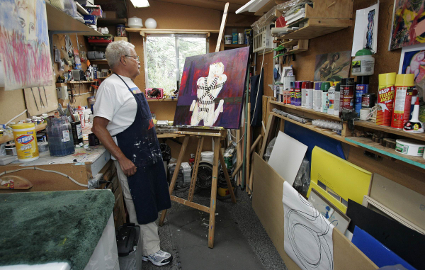Torah inspires works by Brooklyn artist in Arizona

TORAH%20ART_N.jpg
Mordecai Colodner, a Brooklynite who retired to Arizona, finds faith just as important a tool as any brush, canvas or easel when it comes to creating art.
His paintings vary, from abstract pieces to serene Southwest scenes, but his primary inspiration derives from the teachings of the Torah.
Every room in his home just north of Oro Valley contains framed acrylic works, each relating to a different story from the Hebrew Bible.